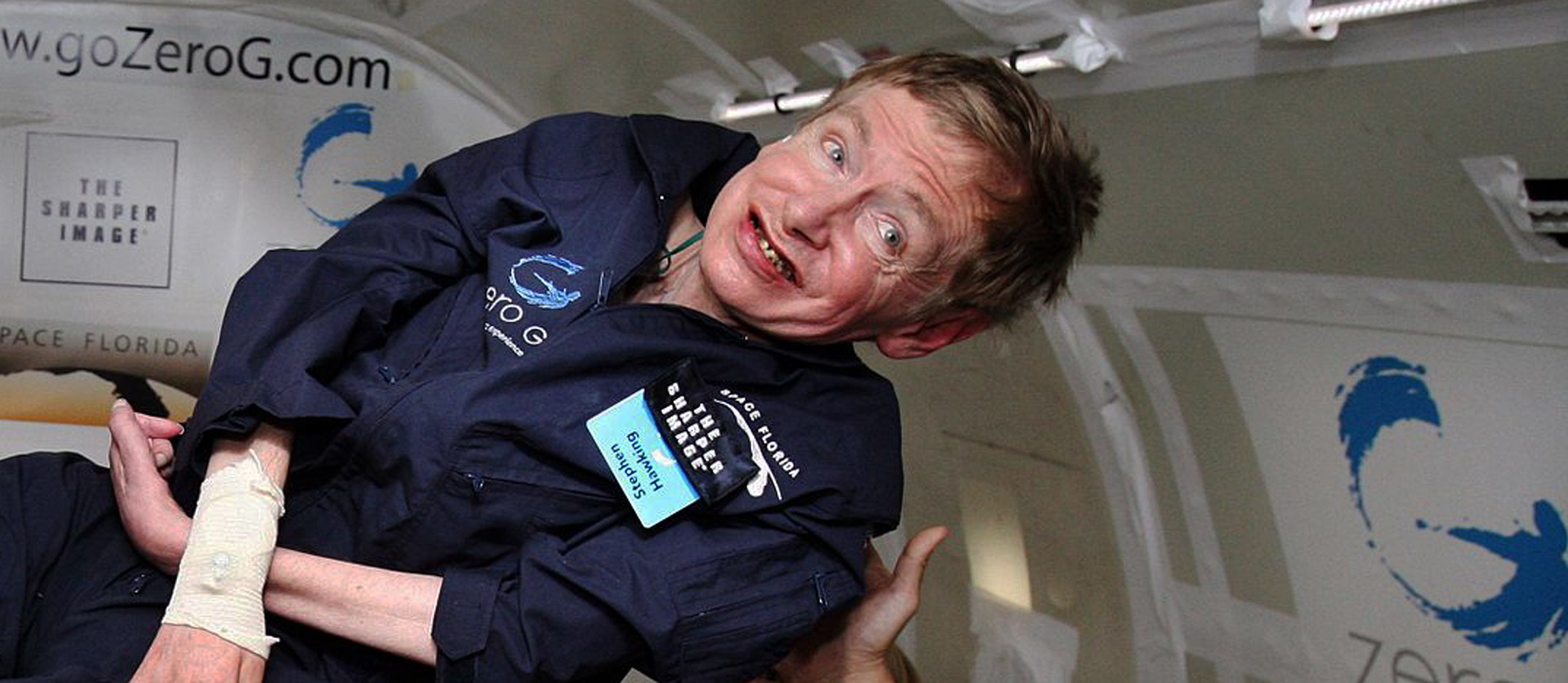“Be curious!”

“I want to understand the Universe through and through. I want to know why it is as it is and why it exists in the first place.” Up to the day of his death, Stephen Hawking continued to explore these fundamental questions. As an astrophysicist, the domain of experiments was closed to him. But he could think deeply and develop theories. And his theories shed new light on the physics of black holes in particular. In a TV programme not so long ago, he posed the question again: “Why does the Universe, and all the laws of nature, exist? His mind was one of the very few that might have come up with a persuasive answer.
The first signs of amyotrophic lateral sclerosis, the incurable disease that would mark him for life, appeared when he was still a student in the mid-1960s. It progressively destroyed his motor neural system. But it left his capacity for thought – and obviously his will to live – undimmed. When the condition was diagnosed, the doctors gave him only a few years to live. But the shattering diagnosis appears to have activated unsuspected reserves of strength and resilience. Within a few years, he found himself confined to a wheelchair and was almost totally incapable of voluntary movement. But his thoughts could still range through the vast expanses of the Universe, whose dimensions are unfathomable for us. Indeed, that is perhaps the most fascinating thing about Hawking. In spite of the merciless constraints imposed by his disability, in his mind he was able to create a cosmos of his own, in which he was free to roam as he pleased.
Hawking believed that there might well have been a precursor Universe that preceded the Big Bang, and had itself undergone a Big Crunch. He developed the notion from the concept of a singularity. A singularity is a point at which the curvature of space-time and the energy density of the Universe tend towards infinity, an infinitesimally tiny region such as that which must have preceded the Big Bang. Hawking realized that a black hole and the singularity from which our Universe emerged can be described by the same mathematical model. Just as a massive star can collapse into a singularity under the force of its own gravity, so the whole of the Universe could have evolved from a singularity. His singularity theorem provided further mathematical support for the very notion of the Big Bang, an idea which only began to be widely accepted by physicists in the year in which Hawking wrote his doctoral dissertation.
Then in 1974, Hawking published what is undoubtedly his most remarkable contribution to cosmology. He showed that black holes not only swallow matter. They also emit radiation, of a type which was later given the name ‘Hawking radiation’. In effect, he argued that a black hole should (very) slowly evaporate, and eventually disappear. This result caused a sensation, because physicists had assumed that black holes were so dense that nothing could escape from their gravitational force. However, Hawking radiation is a consequence of the laws of quantum mechanics, while the physics of black holes had previously been based solely on the tenets of the general theory of relativity. Physicists dream of subsuming these two theories within a single, unified framework, and although this goal eluded Hawking, his work was a significant advance in this endeavour.
Hawking was also a pioneer in other fields. He made every effort to explain his work to the general public, at a time when most scientists preferred to communicate exclusively with their peers. In 1988, Hawking’s “A Brief History of Time” appeared on the market. It was his first popular science book, and it dealt with current theories on the origin of the Universe and the physics of black holes, as well the laws of quantum mechanics. The book became a bestseller and sold in millions of copies.
Like Einstein before him, Hawking became a protagonist of popular culture. He played poker with Data in Star Trek, appeared several times in “The Simpsons” participated in discussions with the nerds in the sitcom “The Big Bang Theory”.
In recent years, Hawking had become increasingly worried about mankind’s prospects. He became convinced that humans would have to leave their home planet and establish colonies in space within the next 100 years in order to ensure the survival of the species. “Our greed and our stupidity have certainly not diminished,” he said a short time ago. He was particularly concerned about the implications of climate change. But genetically modified viruses, overpopulation, nuclear weapons and the threat of a collision with an asteroid were also among the threats that led him to argue that we have no alternative but to the establish a second home elsewhere in the cosmos.
Hawking’s work on the physics of black holes, the evolution of the Universe and the theory of general relativity remain his most important contributions to physics. But he was also something of a philosopher. This side of the great physicist comes to the fore in a short video which was made in his final months, and was released by Cambridge University after his death. Hawking is shown against the background of a starry panorama, and he addresses the viewer directly: “It has been a glorious time to be alive and doing research in theoretical physics … Remember to look up at the stars and not down at your feet.” But perhaps his most important admonition was his last – “Be curious!”













